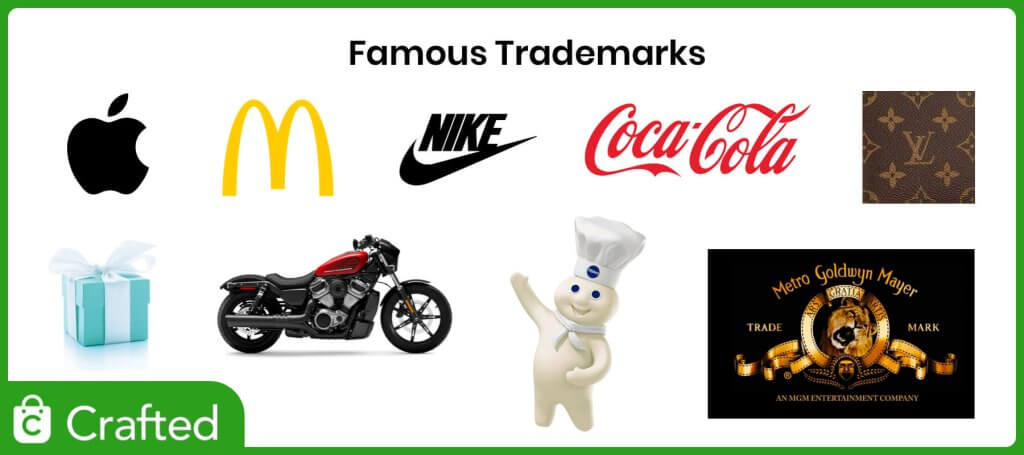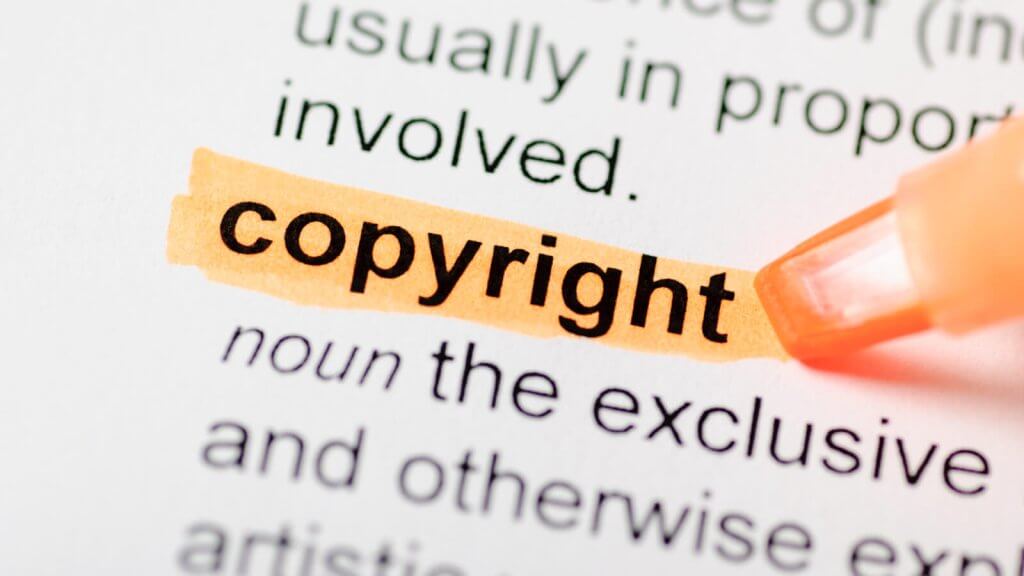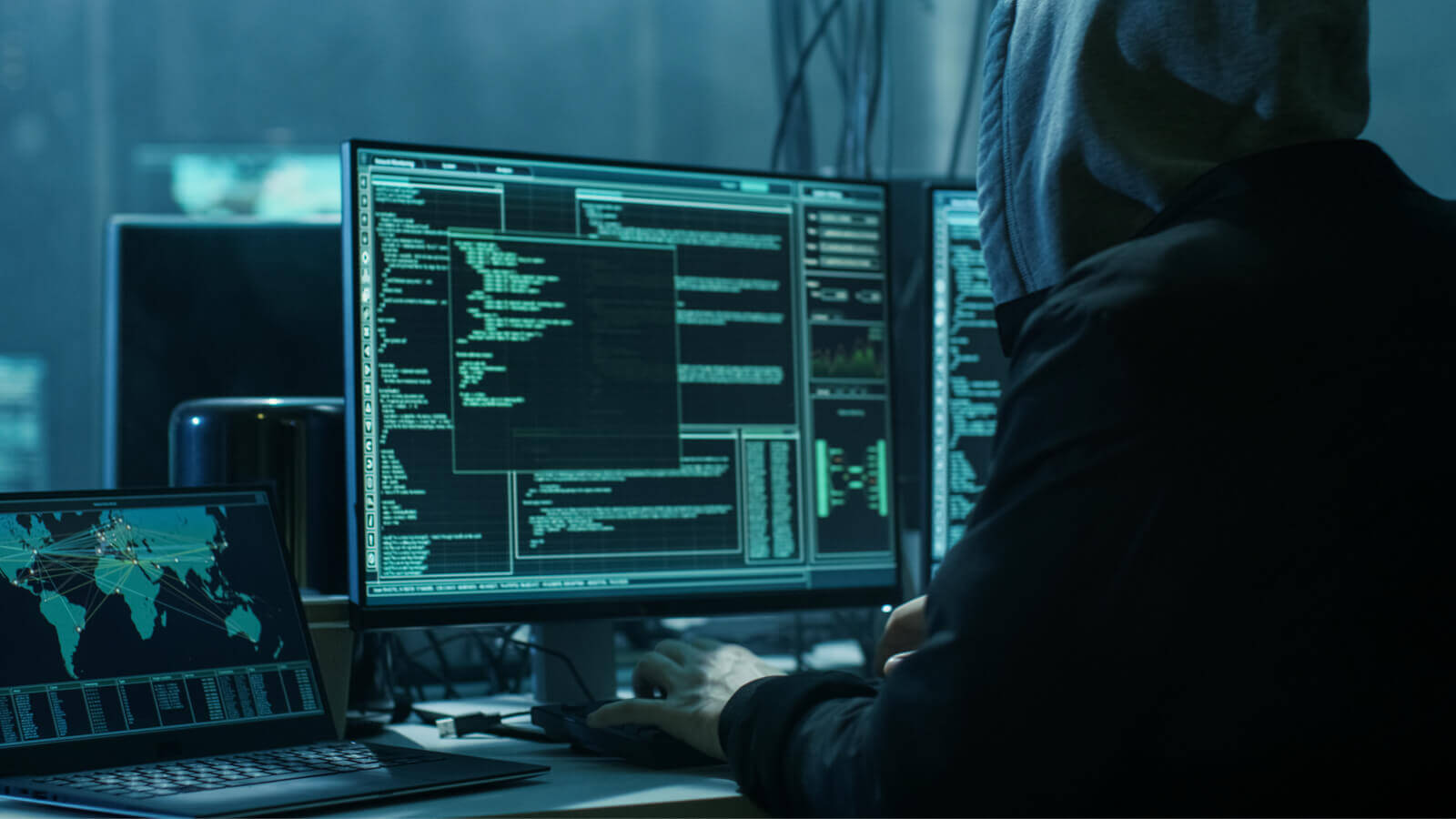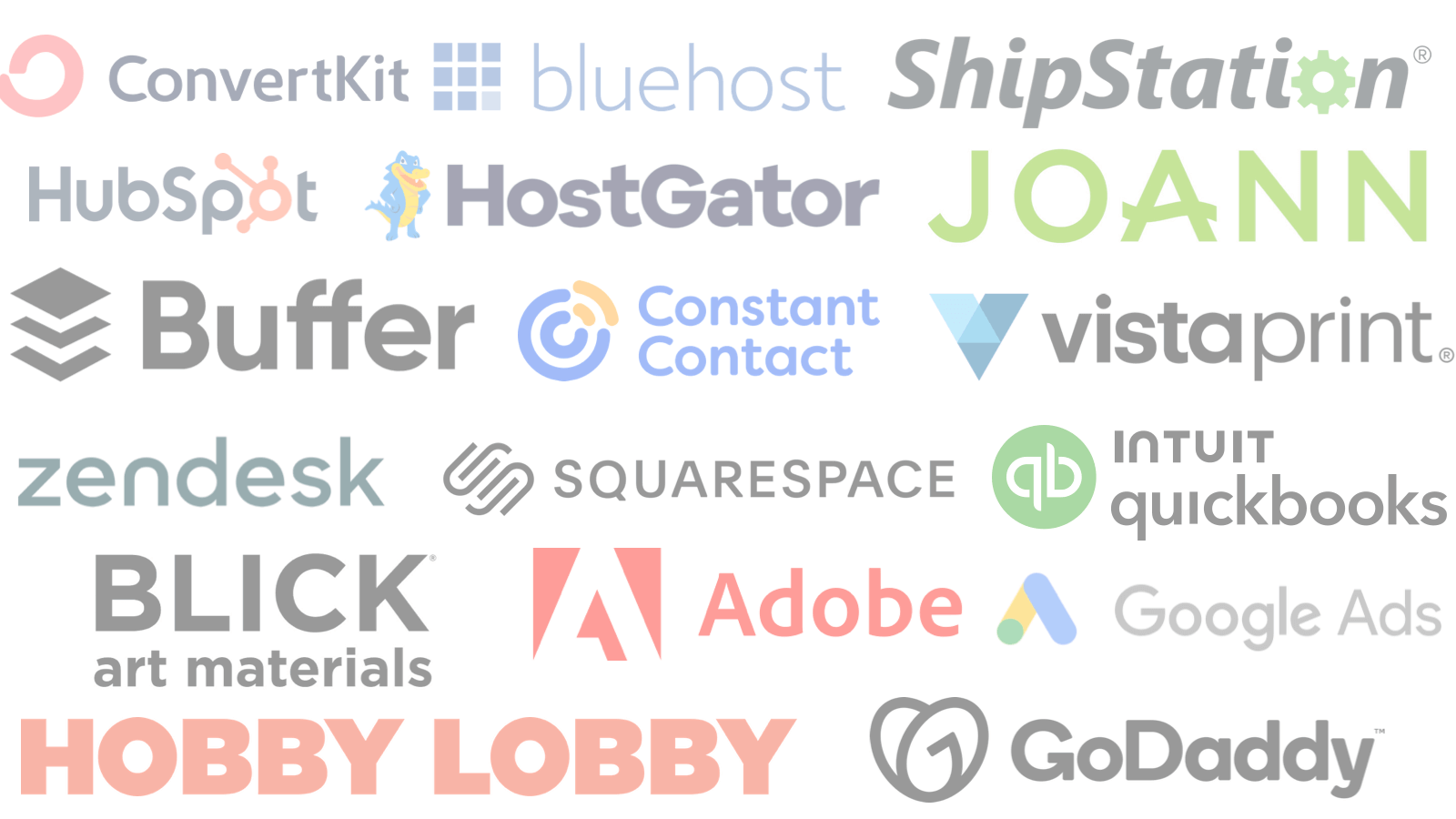Ecommerce has seen a significant increase in popularity over the past decade, with more and more businesses choosing to sell their products and services online. However, with the rise of ecommerce comes the need for sellers to protect their intellectual property rights. This includes trademarks, copyrights, and patents. In this article, we will discuss what each of these terms means, what can be protected, what to do if someone is infringing upon your rights, and how to find a lawyer to help you with your dispute. We will also provide resources for those looking to learn more about these topics.
Legal Disclaimer:
This guide is for informational purposes only and does not constitute legal advice.
Trademarks
Trademarks are an essential aspect of protecting a business’s brand and reputation. In a crowded ecommerce marketplace, it is crucial to distinguish your products or services from those of your competitors. A trademark allows you to do just that by providing exclusive rights to use and protect your business’s identity. In this section, we will dive deeper into what trademarks are, what can be trademarked, and why trademark registration is essential for ecommerce sellers.
What are trademarks?
A trademark is a word, phrase, symbol, or design that identifies and distinguishes the source of a product or service from those of others. In other words, it’s a way for businesses to protect their brand and prevent others from using similar marks that may cause confusion among consumers.
What can be trademarked?
Trademarks can be words, names, symbols, logos, slogans, packaging, and even sounds or scents. As long as it is distinctive and identifies the source of a product or service, it can be trademarked.

Here are some examples of trademarks:
- Apple’s logo, which is a simple image of an apple with a bite taken out of it.
- Nike’s “swoosh” symbol, which is a stylized checkmark.
- Coca-Cola’s distinctive script logo.
- McDonald’s “golden arches” logo.
- Tiffany’s iconic blue box with a white ribbon.
- Harley-Davidson’s roaring engine sound.
- MGM’s lion roar.
- Pillsbury’s doughboy character.
- Louis Vuitton’s signature monogram pattern.
These trademarks have become instantly recognizable to consumers worldwide and have become an integral part of their respective brand identities.
Why Trademark Registration is Crucial for Ecommerce Businesses
Although common law rights can be established simply by using a mark in commerce, registering a trademark with the United States Patent and Trademark Office (USPTO) provides additional benefits and protections. Registered trademarks are presumed valid and give the owner nationwide rights to use the mark in connection with their goods or services. Additionally, registration allows the owner to use the ® symbol, which can deter others from using similar marks. In the event of infringement, registered trademark owners may also be eligible for statutory damages and attorney’s fees.
Even though registering a trademark with the USPTO provides significant benefits, disputes over trademarks are not uncommon. Here are some examples of famous legal disputes over trademarks:
- Apple Inc. vs. Apple Corps: The Beatles-owned record label sued Apple Inc. for trademark infringement over the use of the name “Apple.” The two companies eventually settled in 2007, with Apple Inc. purchasing the trademark rights from Apple Corps.
- Monster Energy vs. Beastie Boys: Monster Energy used the Beastie Boys’ music in a promotional video without permission, leading to a lawsuit for copyright infringement and trademark dilution. The parties settled in 2014.
- Mattel Inc. vs. MGA Entertainment Inc.: The toy companies went to court over the rights to the Bratz dolls, with Mattel claiming that the dolls’ creator, a former employee of Mattel, had developed the concept while still working for Mattel. MGA eventually won the case in 2011.
- Chanel vs. What About Yves: A clothing company created a line of clothing with the tagline “What About Yves,” referencing the fashion designer Yves Saint Laurent. Chanel, which owns the trademark for the term “Yves Saint Laurent,” sued for trademark infringement. The case was settled in 2016, with What About Yves agreeing to stop using the tagline.
- The Washington Football Team: In 2020, the NFL team formerly known as the Washington Redskins announced that they would be changing their name due to concerns over racial insensitivity. The team has yet to announce a new name, but trademark disputes have arisen over potential replacement names, including the Washington Redtails and the Washington Warriors.
These examples illustrate the importance of protecting your trademarks and the potential legal consequences of infringing on someone else’s trademark.
Copyrights
Copyright protection is an essential aspect of safeguarding the creative works of ecommerce sellers. With the increasing prevalence of digital media and the ease of sharing information online, protecting original works has become more challenging than ever. Copyright laws are in place to protect the rights of creators and prevent others from using their works without permission. In this section, we will discuss what copyrights are, what can be copyrighted, and why copyright registration is important for ecommerce businesses looking to protect their creative works
What are copyrights?
Copyright is a legal protection given to creators of original works of authorship, such as literary, artistic, musical, and dramatic works. Copyright gives the creator exclusive rights to reproduce, distribute, and display their work publicly. It also grants the creator the right to create derivative works based on their original creation.
What can be copyrighted?
Copyright applies to a wide range of creative works, including:
- Literary works, such as books, articles, and manuscripts.
- Musical works, such as songs and compositions.
- Dramatic works, such as plays and screenplays.
- Artistic works, such as paintings, photographs, and sculptures.
- Software and computer programs.
- Architectural designs.
- Sound recordings and audiovisual works.
Why Copyright Registration is Important for Ecommerce Sellers
Similar to trademark registration, copyright registration is not necessary to establish common law rights in a work. However, registering a copyright with the U.S. Copyright Office provides several benefits, including:
- Legal presumption of ownership and validity.
- The right to sue for copyright infringement.
- Statutory damages and attorney’s fees in the event of infringement.
- The ability to record the copyright with U.S. Customs and Border Protection to prevent the importation of infringing copies.
Copyright disputes are not uncommon and have arisen in various industries. Here are some examples of famous copyright disputes:
- “Blurred Lines” by Robin Thicke and Pharrell Williams: In 2015, the family of Marvin Gaye filed a copyright infringement lawsuit against Thicke and Williams, alleging that their hit song “Blurred Lines” was a copy of Gaye’s 1977 song “Got to Give It Up.” The jury found in favor of the Gaye family, and Thicke and Williams were ordered to pay $7.4 million in damages.
- The “Happy Birthday” song: For decades, Warner/Chappell Music claimed ownership of the copyright to the popular song “Happy Birthday,” demanding royalties from anyone who wanted to use it in a public performance or commercial setting. In 2015, a judge ruled that the copyright was invalid, and the song is now in the public domain.
- “Stairway to Heaven” by Led Zeppelin: In 2016, the band was sued for copyright infringement by the estate of songwriter Randy Wolfe, who alleged that the intro to “Stairway to Heaven” was lifted from Wolfe’s song “Taurus.” The jury ultimately ruled in favor of Led Zeppelin, but the case highlighted the complexities of copyright infringement claims in the music industry.
- “The Da Vinci Code” by Dan Brown: In 2006, the authors of a non-fiction book called “The Holy Blood and the Holy Grail” sued Dan Brown for copyright infringement, alleging that he had lifted key elements of their work for his novel “The Da Vinci Code.” The case was dismissed, but it raised questions about the extent to which authors can borrow from other works without infringing on copyright.
- “Raging Bull” screenplay by Paul Schrader and Mardik Martin: In 2014, Schrader and Martin sued MGM and 20th Century Fox for copyright infringement, claiming that the studios had used their screenplay without permission to create the 2013 film “Raging Bull II.” The case was settled out of court.
Patents
Innovation is the driving force behind many ecommerce businesses, and protecting new ideas and inventions is essential for continued success. Patents provide inventors with the legal framework to protect their ideas, ensuring that they can benefit from their investment in research and development. In this section, we will explore what patents are, what can be patented, and why patent registration is essential for ecommerce sellers looking to protect their intellectual property.
What are patents?
Patents are a type of intellectual property that provides inventors with exclusive rights to prevent others from making, using, selling, or importing their invention for a limited period of time. The purpose of patents is to encourage innovation by allowing inventors to recoup their investment in developing new products or processes.
What can be patented?
To be eligible for a patent, an invention must be new, useful, and non-obvious. Patents can be granted for a wide range of inventions, including:
- Machines and mechanical devices
- Chemical compounds and compositions
- Medical treatments and devices
- Software and computer programs
- Business methods and processes
- Plants and plant varieties
Here are some examples of famous patents that have had a significant impact on society:
- Alexander Graham Bell’s telephone: In 1876, Bell was granted a patent for the first practical telephone, which revolutionized communication and led to the founding of Bell Telephone Company (later AT&T).
- Thomas Edison’s light bulb: Edison’s 1879 patent for the first commercially successful incandescent light bulb paved the way for widespread use of electric lighting.
- Tesla’s electric motor: In 1888, Nikola Tesla was granted a patent for his AC (alternating current) motor, which helped pave the way for modern electrical power systems.
- Wright brothers’ airplane: In 1906, the Wright brothers were granted a patent for their flying machine, which they had successfully flown in 1903. The patent protected the unique design and control system of their aircraft.
- Polaroid instant camera: In 1948, Edwin Land was granted a patent for the first instant camera, which produced prints in seconds without the need for developing chemicals.
- Velcro: In 1955, Swiss engineer George de Mestral was granted a patent for Velcro, a hook-and-loop fastener system inspired by the way burrs stick to clothing.
- Apple’s slide-to-unlock feature: In 2010, Apple was granted a patent for its slide-to-unlock feature, which allows users to unlock their phones by swiping their finger across the screen.
Why Patent Registration is a Must for Ecommerce Entrepreneurs
Patent registration provides crucial legal protection and exclusive rights to inventors, allowing them to prevent others from using their invention without permission. Additionally, patents can be licensed or sold to generate revenue or secure funding for further research and development. However, even with legal protection, disputes over patent infringement can still arise. In some cases, these disputes can become complex and costly, requiring businesses to take swift action to protect their intellectual property.
Famous Patent Disputes:
- Apple vs. Samsung: In 2011, Apple filed a patent infringement lawsuit against Samsung, alleging that the company had copied the design and features of the iPhone and iPad in its own products. The legal battle continued for several years, with both sides winning and losing various lawsuits. Ultimately, Samsung was ordered to pay Apple $539 million in damages.
- Amazon vs. Barnes & Noble: In 2009, Amazon was granted a patent for its “one-click” checkout system, which allowed customers to make purchases with a single click of a button. Barnes & Noble developed a similar system and was sued by Amazon for patent infringement. The two companies eventually settled out of court.
- Intel vs. Via Technologies: In 2000, Intel sued Via Technologies for patent infringement related to microprocessors. The case was settled out of court, with Via Technologies agreeing to pay Intel $20 million in damages.
- Monsanto vs. Pioneer Hi-Bred: In 1991, Monsanto sued Pioneer Hi-Bred for patent infringement related to genetically modified soybeans. The case was settled out of court, with Pioneer Hi-Bred agreeing to pay Monsanto $1 million in damages.
What to do if someone is infringing upon your trademark, copyright, or patent
If someone is infringing upon your trademark, copyright, or patent, it’s important to take action to stop the infringement and protect your rights. We will explore the steps you can take if someone is infringing upon your intellectual property, including cease and desist letters and legal action.
Step 1: Process Overview
If you suspect that someone is infringing upon your intellectual property, there are several steps you can take to protect your rights:
- Gather evidence: Collect evidence of the infringement, including copies of the infringing work, the date of the infringement, and any communication you’ve had with the infringing party.
- Contact the infringing party: Send a letter or email to the infringing party, explaining the infringement and requesting that they stop using your intellectual property.
- Send a cease and desist letter: If the infringing party continues to use your intellectual property, send a formal cease and desist letter, outlining your legal rights and demanding that they stop using your intellectual property.
- Consider legal action: If the infringing party refuses to stop using your intellectual property, you may need to take legal action to protect your rights.
Step 2: Cease and desist letters
A cease and desist letter is a formal legal notice sent to an individual or organization that is infringing upon your intellectual property. The letter outlines your legal rights and demands that the infringing party stop using your intellectual property. Cease and desist letters can be an effective way to stop infringement without resorting to legal action.
Here’s an example of what information to include in a cease and desist letter:
[Your Name] [Your Address] [City, State ZIP Code] [Date]
[Recipient’s Name] [Recipient’s Address] [City, State ZIP Code]
Dear [Recipient’s Name],
I am writing to inform you that you are infringing upon my intellectual property rights by [describe the infringement, e.g., using my trademarked name on your website]. I am the rightful owner of this intellectual property, and your use of it without my permission is a violation of the law.
I demand that you immediately stop all use of my intellectual property and remove any infringing content from your website. Failure to comply with this demand may result in legal action against you.
Please be advised that I am prepared to take all necessary legal action to protect my intellectual property rights, including seeking damages for any harm caused by the infringement.
I demand that you respond to this letter within [a specific time frame, e.g., 10 days] to confirm that you have stopped all use of my intellectual property.
Sincerely,
[Your Name]
Download template as a Google Doc
Step 3: Legal action (if previous did not addess the situation)
If the infringing party refuses to stop using your intellectual property, you may need to take legal action to protect your rights. Legal action can include filing a lawsuit, seeking an injunction to stop the infringement, and seeking damages for any harm caused by the infringement. It’s important to consult with a qualified attorney before taking legal action to ensure that you have a strong case and are following the proper legal procedures.
Finding a lawyer to help you with your trademark/copyright/patent dispute
If you’re involved in a trademark, copyright, or patent dispute, it’s important to work with a qualified attorney who can help you protect your intellectual property rights. In this section, we will explore the steps you can take to find a lawyer to help you with your dispute, including researching lawyers, scheduling an initial consultation, and choosing the right lawyer for your case.
Researching lawyers
When looking for a lawyer to help you with your intellectual property dispute, it’s important to do your research and find a qualified attorney who has experience with similar cases. You can start by:
- Searching online: Use search engines or legal directories to find attorneys who specialize in intellectual property law.
- Checking with professional organizations: Organizations like the American Intellectual Property Law Association (AIPLA) and the International Trademark Association (INTA) can provide referrals to qualified attorneys.
- Asking for referrals: Ask friends, colleagues, or other professionals for referrals to attorneys they have worked with and trust.
Initial consultation
Once you’ve identified potential lawyers, schedule an initial consultation to discuss your case and determine if the lawyer is a good fit for you. During the consultation, be prepared to:
- Explain your case: Provide the attorney with a detailed overview of your dispute, including any evidence you have gathered.
- Ask questions: Ask the attorney about their experience with similar cases, their approach to resolving disputes, and their fees.
- Discuss your options: The attorney should be able to explain your legal options and help you determine the best course of action for your case.
Choosing the right lawyer for your case
When choosing a lawyer to help you with your intellectual property dispute, it’s important to consider factors such as:
- Experience: Look for a lawyer who has experience with similar cases and a proven track record of success.
- Communication: Choose a lawyer who communicates clearly and promptly, and who is responsive to your questions and concerns.
- Fees: Consider the lawyer’s fees and billing structure to ensure that you can afford their services.
Resources for learning more
It’s important to stay informed about intellectual property laws and regulations. Here’s a collection of resources and links for learning more about trademarks, copyrights, and patents.
Government websites
- United States Patent and Trademark Office (USPTO): https://www.uspto.gov/
- Copyright Office: https://www.copyright.gov/
- European Patent Office: https://www.epo.org/
- World Intellectual Property Organization (WIPO): https://www.wipo.int/
Non-profit organizations
- American Intellectual Property Law Association (AIPLA): https://www.aipla.org/
- International Trademark Association (INTA): https://www.inta.org/
- Electronic Frontier Foundation (EFF): https://www.eff.org/
- Public Knowledge: https://www.publicknowledge.org/
Legal blogs and websites
- Patently-O: https://patentlyo.com/
- IPWatchdog: https://www.ipwatchdog.com/
- The National Law Review: https://www.natlawreview.com/
- The IPKat: https://ipkitten.blogspot.com/
Legal Disclaimer
This guide is for informational purposes only and does not constitute legal advice. The information provided in this guide is not a substitute for professional legal advice and should not be relied upon as such. Laws and regulations related to intellectual property rights can vary by jurisdiction and are subject to change. Readers should consult with a qualified attorney to obtain advice on specific legal issues related to their intellectual property rights. The authors of this guide make no representations or warranties of any kind, express or implied, about the completeness, accuracy, reliability, suitability or availability with respect to the guide or the information, products, services, or related graphics contained in the guide for any purpose. Any reliance you place on such information is therefore strictly at your own risk. In no event will the authors of this guide be liable for any loss or damage including without limitation, indirect or consequential loss or damage, or any loss or damage whatsoever arising from loss of data or profits arising out of, or in connection with, the use of this guide.



